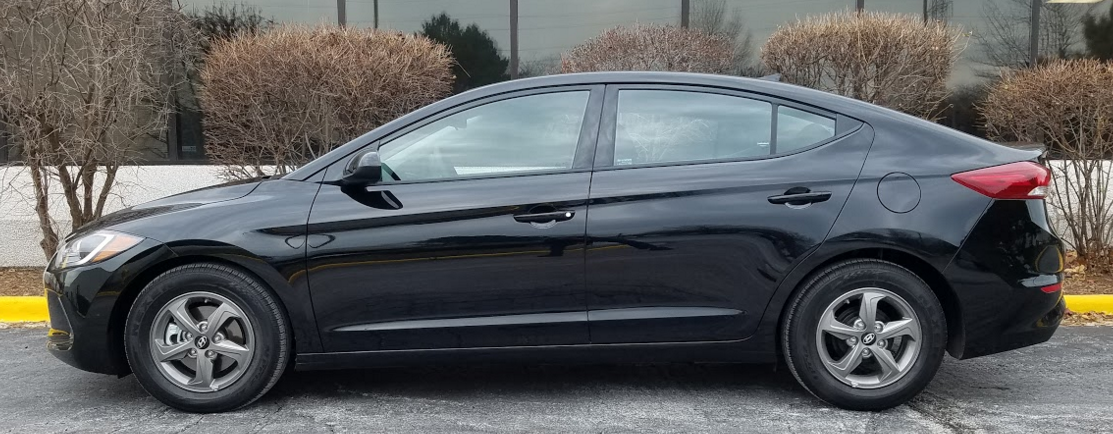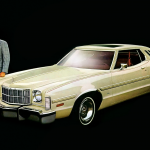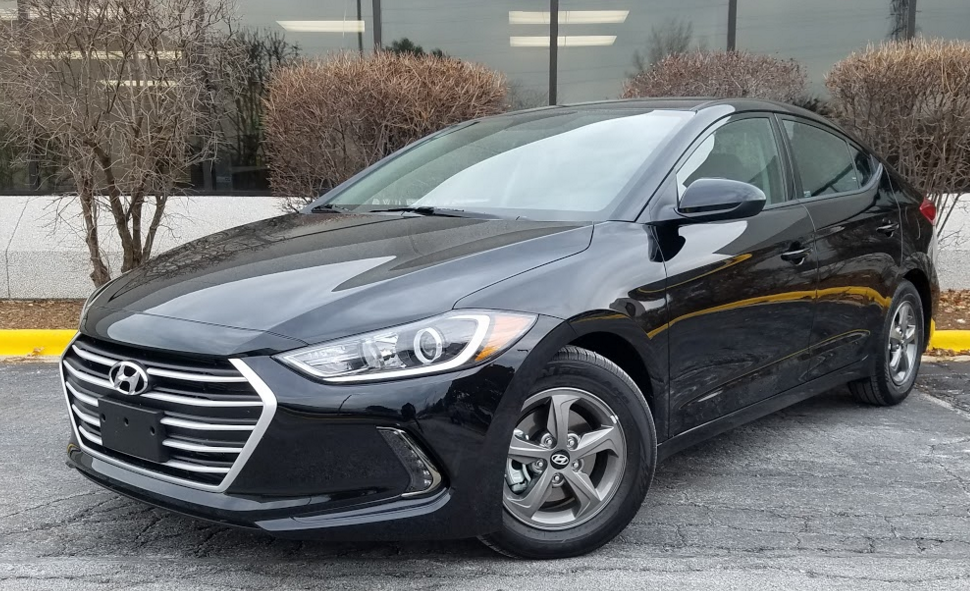
 2018 Hyundai Elantra Eco
2018 Hyundai Elantra Eco
Class: Compact Car
Miles driven: 739
Fuel used: 20.3 gallons
Real-world fuel economy: 36.4 mpg
| CG Report Card | |
|---|---|
| Room and Comfort | B- |
| Power and Performance | C+ |
| Fit and Finish | B- |
| Fuel Economy | A- |
| Value | A |
| Report-card grades are derived from a consensus of test-driver evaluations. All grades are versus other vehicles in the same class. Value grade is for specific trim level evaluated, and may not reflect Consumer Guide's impressions of the entire model lineup. | |
| Big & Tall Comfort | |
| Big Guy | B- |
| Tall Guy | B- |
| Big & Tall comfort ratings are for front seats only. "Big" rating based on male tester weighing approximately 350 pounds, "Tall" rating based on 6'6"-tall male tester. | |
Driving mix: 55% city, 45% highway
EPA-estimated fuel economy: 32/40/35 (city, highway, combined)
Base price: $20,550 (not including $885 destination charge)
Options on test vehicle: Carpeted floor mats ($125)
Price as tested: $21,560
Quick Hits
The great: Fuel economy, features for the money
The good: Decent ride, relatively low noise levels
The not so good: Subpar interior materials
More Elantra price and availability info
John Biel
Here we go again.
The big noise around the compact Hyundai Elantra line in 2018 is the update of the GT hatchbacks to match what was done to the sedan versions for 2017. So, except for the insertion of a new SEL trim level, ’18 sedans like the Eco model tested by Consumer Guide® editors are more or less just like their immediate predecessors — and CG did drive a ’17 Eco.

To refresh memories, the Eco comes with a powerteam unlike that in any other Elantra model: a 128-horsepower 1.4-liter turbocharged 4-cylinder engine paired with a 7-speed “EcoShift” dual-clutch automated-manual transmission. (Most other models come with a 147-horsepower 2.0-liter four mated to either a 6-speed manual or conventional 6-speed automatic.) Other base features include 15-inch alloy wheels and low-rolling-resistance tires, Apple CarPlay and Android Auto capability, Bluetooth connectivity, cloth upholstery, heated front seats, dual-zone automatic air conditioning, a leather-wrapped steering wheel, keyless entry and starting, 3.5-inch thin-film-transistor vehicle-information display, infotainment system with a 7-inch touchscreen, HD and satellite radio, a hands-free smart trunk that opens if you stand behind the car with the key fob for more than three seconds, blind-spot detection, rear cross-traffic alert, and a rearview camera with dynamic guidelines. While most Elantras come with 4-wheel disc brakes, the Eco and base SE have front discs and rear drums.
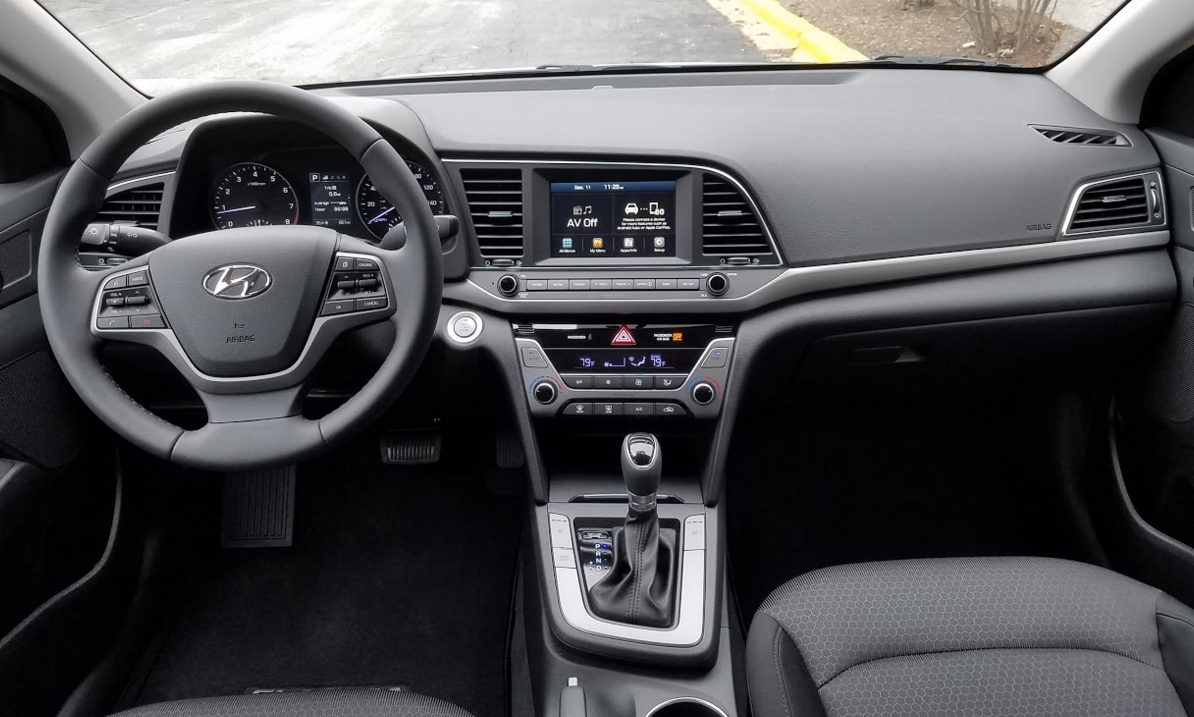
Personal storage is handled via a sizeable glove box, a smallish rectangular console box, a covered bin with auxiliary/USB ports and two 12-volt plugs, and a net pouch on the back of the front passenger seat. Each door has a pocket with a bottle holder. Cup holders for the front passengers are found in the middle of the console, while cup holders for rear occupants pop out of the back of the console.
Test Drive: 2016 Honda Civic EX
While there’s nothing particularly thrilling about the turbocharged engine, it provides enough on-demand go to keep highway merging or passing from getting into white-knuckle territory. A “Drive Mode Select” toggles between “Normal” and “Sport,” altering powertrain behavior, but only to a very slight degree. Automated manuals like the Eco’s transmission are sometimes beset by odd shifting behavior — and indeed, CG’s Damon Bell called out the 2017 Eco test car for this — but our testers who drove the ’18 car (including Damon) didn’t find that to be as much of an issue. More of note is that the Eco model is EPA-rated at 32 city/40 highway/35 combined, and our fuel economy supported those numbers. This reviewer averaged 33 mpg from a 113-mile run that included 55 percent city-type driving, and overall, our testers averaged 36.4 mpg in about the same percentage of city driving, beating the 35-mpg combined rating.
First Spin: 2016 Chevrolet Cruze
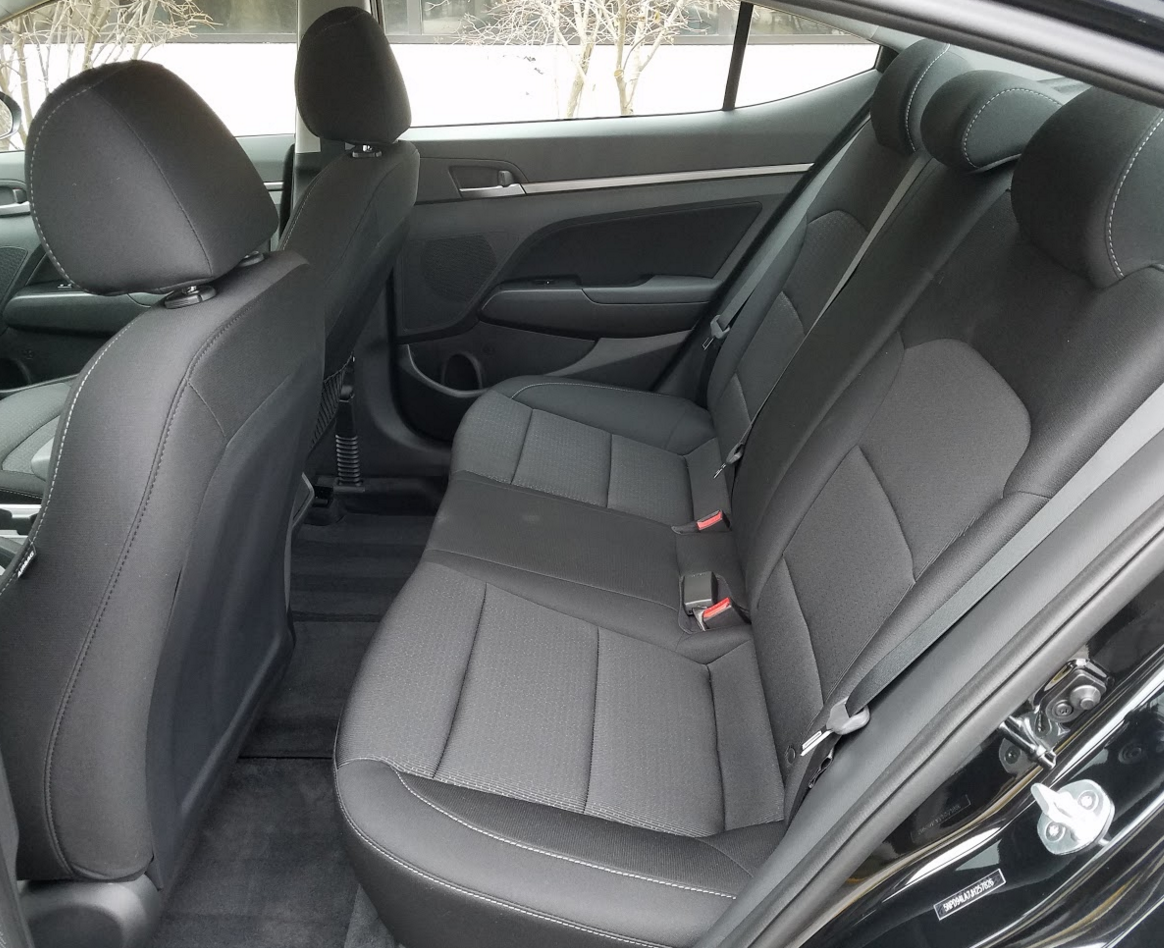
Relatively high-profile tires provide a little extra cushioning over bumps to help out ride comfort; the Eco keeps from jostling passengers most of the time. However, this driver sensed some tire noise, especially on the highway. Steering behavior is not bad overall, but really crisp handling is apparently not a priority with this car.
Space for rear-seat occupants is OK only if shorter folks are sitting up front. Even sub-6-footers can start to crowd those in back. Effective adult capacity is four, though a fifth may fit in the back in a pinch, thanks to a low, flat-topped floor hump. Headroom is good in front — the headliner is sculpted to maximize the space — but a little less so in back.
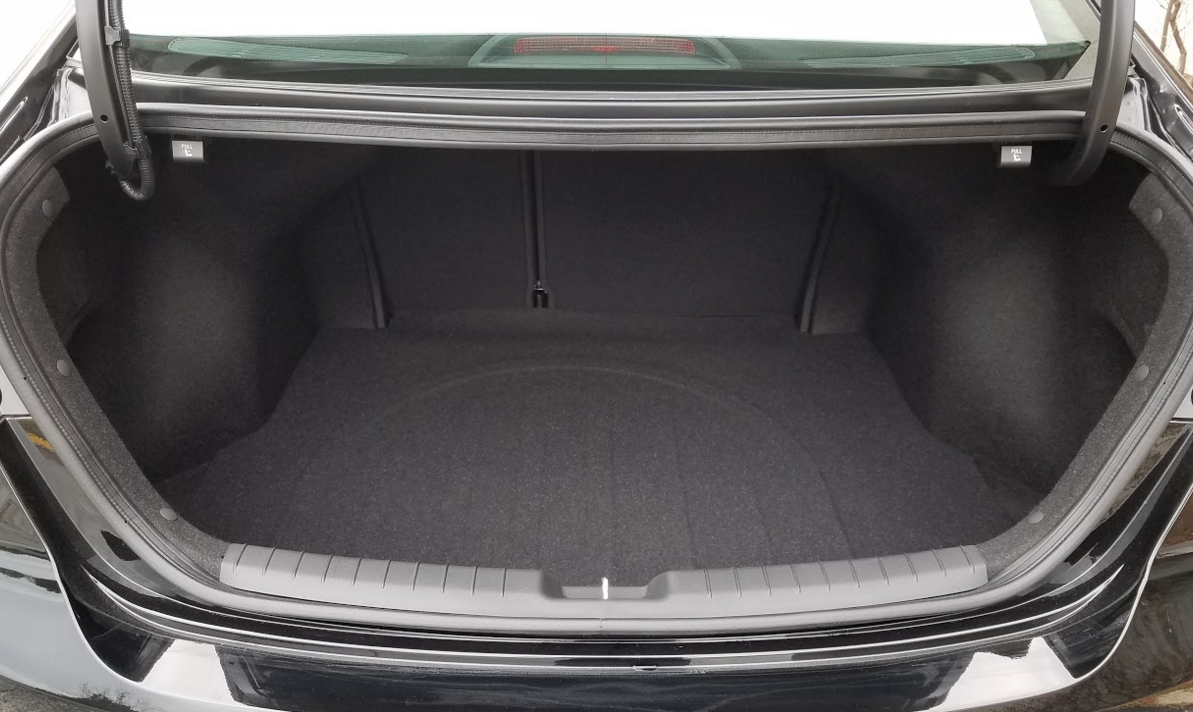
Trunk space is good for the class. The floor is flat throughout, and liftover is low. Folding rear seat backs are split 60/40, but when lowered, they rest a few inches above the level of the trunk floor. Also, a bulkhead behind the seats narrows the threshold between trunk and cabin.
Interior appointments are a little stark — soft or padded surfaces are at a minimum. However, seats are supportive with a degree of built-up bolstering in the cushions and seat backs. Elantras have easy-to-operate audio and climate controls, and other controls are easy to find and simple to use.
Test Drive: 2018 Toyota Corolla SE
The 2018 Eco goes for $21,435 delivered, and it’s hard to spend much more for one. There are no factory-installed option packages, and just a few convenience and appearance accessories. If this car sounded like a good idea last year but you didn’t get around to buying one, the good news is that this year you can make up for that.
